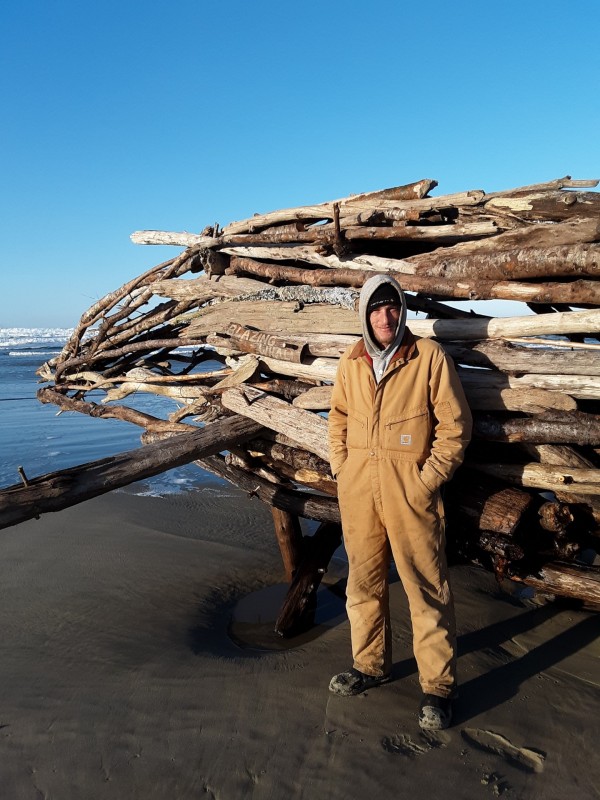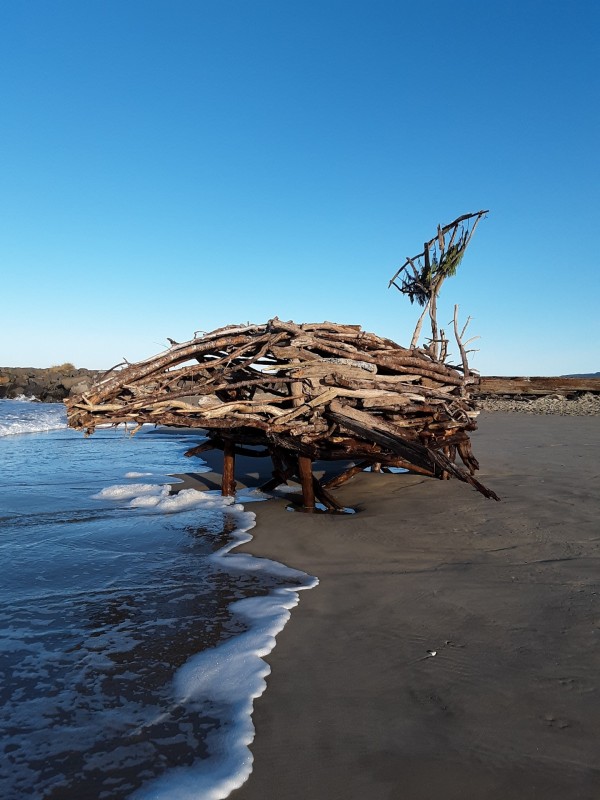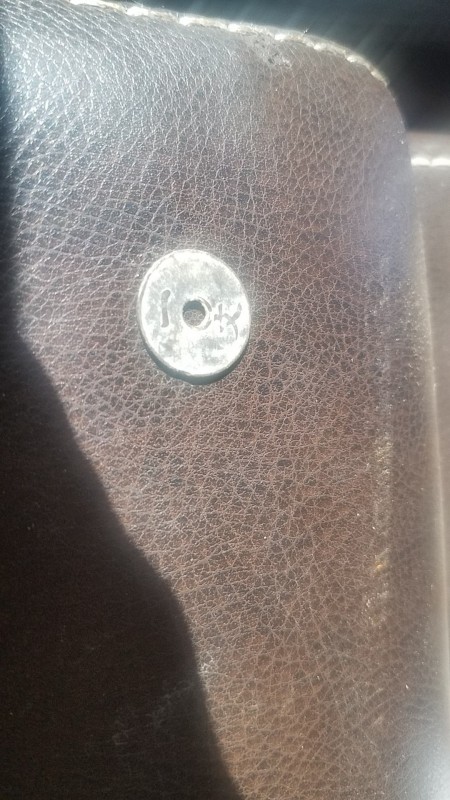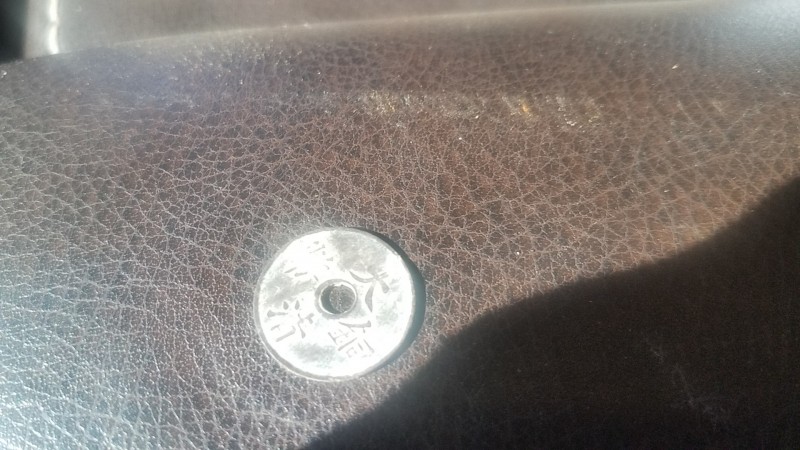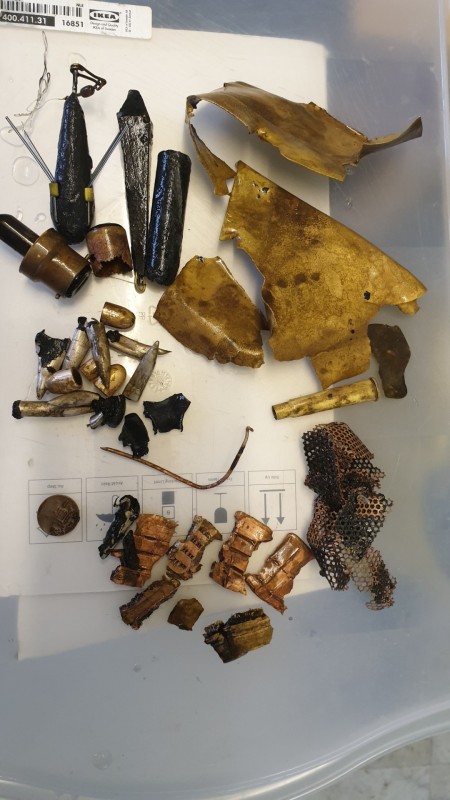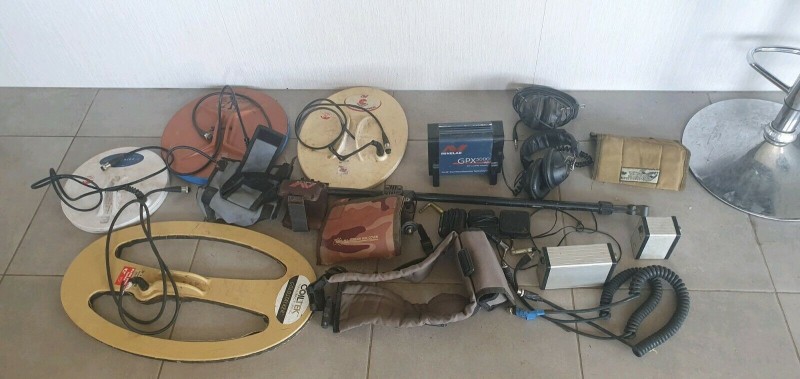Leaderboard
Popular Content
Showing content with the highest reputation on 01/09/2021 in all areas
-
Today I had the chance to get out for a couple of hours to do some hunting and decided on a place where over the past 200 years they have had to rebuild the church 3 times. During the time that the church has been at the same spot they have added on to it a few times to what it is today. This church sits on top of a hill next to the original cemetery when the church was built. I remember seeing some of the old photos that showed an old out house near the back of the church and started there. My first good signal was the typical trash that one would expect to find, and so was the next 20 signals. It seemed that I was going to strike out today when I had a very unusual signal or should I say signals on a small spot of ground. As I am digging I noticed what I thought was another piece of trash, and then I saw a round edge of something small. I pulled it out of the dirt and found a nice 3 cent piece. The signal was still on top of the hole I was digging and I pulled out 2 more coins, each of them were dimes. I rechecked the hole again and nothing else was there, so I decided to fill the hole and call it a day. I don't think it was to bad for just an hour and a half. Here are the photos I took in the car of the coins before I can get them cleaned.24 points
-
For my style of hunting--parks, baseball and football fields--I keep the 15" on 99% of the time. It finds things so small at times that I have issues locating the item even with a pinpointer. It really doesn't go much deeper, but it allows me to vacuum much faster. When I use it along with 7 recovery speed, it picks through targets very well. Would I use it downrange at a trap shooting range? Probably not. I have used it at the beach before with mixed results; it found nothing good just like the 11". The negative that I have experienced at the beach is when the coil gets wet and then you start detecting the dry sand. The extra weight of the sand can be a bit much until it dries enough to shed the sand. In addition, the drag in the water makes swinging it for long periods of time a killer to my joy of detecting at the beach. Some finds are attached to show what the coil has found in the last year. It is no slouch when it comes to the thin rings.8 points
-
Condor took my brother and I out for a hunt in what was a new area for us two to detect and let me tell you it was some of the toughest walking I have done in quite awhile , it did put the hurt on myself and Steve my brother not so much but he is part mountain goat anyway. The good part was everyone found some gold Steve got one, i got one and my brother a couple pieces the gold seems to be very spotty in this area and very thin with a quartz matrix also stained with what seems to be manganese . Here are the pieces my brother and I found.All gold was found using GPZ 7000s.5 points
-
I was able to get out for several hours to an old patch that has been hammered to death, is near power lines and has seen lots of shooting with lead, bullet jackets and fired casings everywhere. Found with the 7000 in Bogene mode. I was concerned about depth in this mode, but one of the pistol cartridge cases was a solid 24" down in sandy soil and was a delicate but obvious signal. My first pieces with the 7000! Total weight of 1.1 grams: It is simply amazing to me how sensitive the 7000 is to tiny lead BBs and bullet shards:4 points
-
Clive .....I have to say I find the Excalibur in All Metal easier to determine the shape, size, and depth of the target. I think part of the reason is the excalibur has a much softer audio. The "AQ"s audio is on steroid's and one must use great coil control to be able to define the shape and size of the target. Depth seems to be a little easier but really can take time to adjust to if your use to other All Metal machines. I do a few scoops then check the target, Oooo it's the next scoop..and Bam its deeper, then every scoop it getting louder and louder..2 scoops later and hard to believe it's blasting like it's a can.. but its a coin or ring. Really takes getting use to a machine that is so powerful. I also love those one way signals on the edge of the detecting field. If you try and move around and get it better ... it disappears...Love this Machine.4 points
-
First out for the year, found a spot that has cuts that are over my head. I know how they got there but best I hold on that for now. One thing for sure targets are every where, on the top shelf, down the slope, and in the bottom. Just have to wait for a better tide so I can hunt the whole bottom and not worry about sliding down the slope. Most targets are shallow. First gold was maybe 12 inch's? Going to be interesting to see how long this spots stays intact-ed. I knew something was up and one reason I took the Excalibur for I had no clue on what I would be walking into. I am debating on taking the 8 inch on the "AQ" next trip. Seems to be no trash at all.... Three hour hunt, 1916 Class Ring and 1929 Class ring. 4 Silvers, which are eaten bad by the brackish waters of the Chesapeake Bay. Water is just dipping into the high 30's, full hunt I was toasty but Need to make some adjustments to my gloves, left glove is like wearing a sock.. No mobility.3 points
-
I am fairly new to MD'ing. Mostly Myrtle Beach while on vacations. A little around home Clark County Ohio. I want to upgrade to something else from my DFX 300. Any suggestions that won't break the bank? Jim3 points
-
Interesting article of the Competition Hunt in TX. Heck they gave away a brand new Chevy Truck. I've done my share of those style of Speed Hunts and actually was really good in the top 10 most of the time. But these hunts were of only a few hundred people. Betty Weeks and Lucile Bowen were out of the NW and the hunt was at Farragut State Park in North Idaho. I won a few detectors back then, but no trucks.3 points
-
Very nice varieties of lead with some colorful ones too. I have always said, these lead detectors do quite well but on occasion they mess up and you dig something odd, like a gold nugget. Hats off to you for your persistence.3 points
-
If you keep in mind you want as little extraneous metal near that coil as possible it offers the answer. You do not want to wrap the excess close to the coil, but up near the control box. Some people go as far as going straight up the rod with all excess wrapped tightly just below the control box. For VLF this is not really needed, but for high power PI models keeping the cable away can be important. As you see in this picture below of some of my detectors setup I usually go straight up for at least some distance before wrapping. The real key is you do not want loose, flopping cable down near the coil.3 points
-
Did a quick hunt the other day and dug only coins. This has to do with the "training" that Canadian coins have given me. In a way they are a "median" target--part non-ferrous and part steel. What this means is that they have characteristics of both. So with a clean processing pulse like the AQ--you have a narrow signal (imagine a tube carrying the response up) with some wide or maybe irregular characteristics. Point being that they make good "trainers" teaching you to look for even poor examples of a narrow response. Then when you hear some clean gold...unmistakable. Foils and tabs will do the same thing but are still not as good of conductors. If you are in soft material focussing on deep heavy targets this is a very strong tool for ID'ing responses with the AQ. Very glad that caps sound wide on this machine. With a pulse that processes at this level the principle of "carry" (see illustration) is even more important. With some VLFs--Hieneken caps are similar to Canadian coins--steel--but with lots of aluminum in there too--right on the border--and for this reason a good teaching tool. cjc2 points
-
What better way to ring in the new year than going nugget shooting in the sunny desert southwest. 😎 In my wanderings through an area heavily worked by the old-time placer miners, I spied an old raked and drywashed nugget patch on a hillside that sloped down to a gravel bench deposit high above the dry creek bed. Back in the VLF gold detector era, the surface rocks were raked away in order to get the detector coil right on the ground, to make up for their limited depth capabilities. Detecting these types of environments with the newer PI and ZVT tech can reveal deeper nuggets that were beyond the reach of VLF detector operators. Slow and methodical coverage of the old patch with the GPZ 7000 yielded two small nuggets for the poke today.2 points
-
2 points
-
Awsome coins Caleb, and they only smell like dirt!🤗 No one wants to see the last 23 cents i found! Not even the cashier at the store!😂 Look's like your doing fine with the 800! Trash is inevitable if you want to catch the good stuff!👍👍2 points
-
https://dirtdigestmagazine.com/wp-content/uploads/2020/07/Emailing-ddjuly2020.pdf I stumbled onto this well written (67 page current issue) online magazine. I don't know if this was meant to take the place of the now defunct hardcopy Lost Treasure and Western and Eastern Treasures but I actually find it better written than some of the late issues of those. It appears non-partisan (manufacturer-wise). Included is an interview with a field tester of the Garrett Apex although it seems to be similar to the YouTube videos by other Garrett 'homers' (this interview is of Gypsy Jewels -- wonder if that's her birth name -- who has her own YouTube channel) so don't expect any new revelations. I still think it's worth reading as is the rest of the magazine. Articles are mostly coin and relic hunting although there is one (rather introductory) about Midwest gold prospecting as well as a typical lost 18th Century horde article. It appears they've been publishing monthly since April 2019. Here is their explanation: About Us Here at Dirt Digest Magazine we have a simple mission: Bring the wonderful world of metal detecting, gold prospecting and artifact hunting to the masses. When Dirt Digest Magazine was in the concept stage we had some good long talks about how to separate ourselves from the competition. Priority #1 was to write for the readers, not for the advertisers. That is actually uncommon in the industry and in doing so we may have alienated ourselves from some potential sponsors. However, we wanted to bring the best of the best to all of our subscribers and let the advertising speak for itself. Then, of course, there was cost. Dirt Digest Magazine has a global message and reaching an audience of that size can be a daunting task. Sure, we could charge a premium for subscriptions to our content, but that would limit the audience greatly. That is why all subscriptions to Dirt Digest Magazine are free and always will be. Finally, we want to be able to showcase those that deserve a voice. Being a digital platform we are not bound by the constraints of printing costs and setup fees. We are able to bring our readers more content and reach a larger audience. So as you can see, we are doing things a little differently. We may be ruffling some feathers in the industry, but that’s okay. Times change and Dirt Digest Magazine is leading the charge.2 points
-
2 points
-
I bought my first gold detector from Harry and Lucile at Bowens Hideout. They had one of the replicas of the Hand of Faith nugget on display in their shop...talk about a whopper!2 points
-
Very short but very productive year for me, seeing as I only got to prospect from Oct. - Dec. and only about 8 days during those months. I'll post a few more photos later of my 2020 finds. But enjoy this semi drawn out nugget discovery to recovery 😂2 points
-
Can't help thinking that most hunters would have a much easier time if they had done some time with a pulse. I think that's why you do so well with the Excal--you have learned to run it like a pulse--and assess your targets with a wider set of metrics. By pulse hunter standards any discrimination spoils you. There's just as much info to be got from the context. Its true though a narrow deep pulse signal is always going to be non-ferrous--simple physics. The TDI is bad for one ways--jury still out on the AQ certainly seems more consistent in that once its "caught" a target it keeps it. cjc2 points
-
Crikey, I always thought my backyard (NQ OZ) was the safest playground in the world until I read this.2 points
-
I'm back! P I wanted to address a few things here. First is Gypsy - she is one of the most humble, sweet, hardcore detectorists I've ever met. She's been detecting for about 25 years and has swung detectors from all the major manufacturers. Lol no it's not her real name but as you can imagine being a female in this hobby she has dealt with some serious inappropriate behavior. She's also a cohost on our all metal mode podcast every Monday night. Steve - I apologize, life has been crazy and hectic. All is good just a lot going on. I would still love to discuss that with you. Dirt digest magazine - without getting into much detail, myself and my good friend are in the process of acquiring it. Big changes and improvements are coming so stay tuned.2 points
-
Was on my Oregon beach today Surf Perch fishing and met this guy who was building a whale out of driftwood. He pegged all the pieces together with wood pins! Kind of an environmentalist guy. He is going to torch it off New Year's Eve. Looks like a good place to detect the next day if all the people show up to watch it! Too rough to catch anything. GaryC/Oregon Coast1 point
-
Thank you I just wish I had some of the areas where you are at to hunt. I would love to hunt around some of the old castles in your country. Thank you After I had found it I was going back to the car and had dropped it and had to find it again. They are hard to find when they are by themselves, but easier when there are other coins near them. I am always amazed at some of your finds and hope that someday I will be as good as some of the people on this forum. Thanks1 point
-
Welcome! I’ve gone back and forth between DFX and V3i several times now, and once again have come back to DFX. If you like the DFX, I’d normally point you at something like the White’s MX7. It shares many similarities as far as how Whites does things (target id range, tones, etc). Unfortunately, with White’s basically gone, you may have to switch brands. There are very many options, but the Minelab Vanquish 540, either the basic package, or the Pro Pack, might be worth a look. It is a light, comfortable detector with excellent bang for the buck. If you want to go higher end and really different, check out the XP Deus. It’s as light as you can get, a featherweight detector. Both have transferable warranties so can be bought used with little risk, or sold with warranty if you do not like them. They hold better resale value than most while the transferable warranties are still in effect. Three years for Vanquish, which means all of them made so far are still under warranty. XP has a five year transferable warranty.1 point
-
Awesome coins bro! the best 23 cents i have ever seen. Looks like you are getting better with your swinging, good job. 😃 ht1 point
-
Adam, Don't over complicate the settings. You will locate most things in the standard Beach 1 mode. I use 23 here mostly as the sensitivity. Use F2 at 0 and keep it in all metal. Now, the zig zag is the way to find a line. Don't go too fast. When you get a target then do a circle. Go down your beach 30 to 40 meters and dig everything. The clues can be trash also. You want to know if weights, hair pins, hooks, caps ... anything will give you an idea of what the waves are doing as well as the tide. You want to know how deep the targets are. You should be getting down 10" and with the right technique a bit more. When you connect your digs with your eyes you should or could find a line just above the black sand line (if you have one) where the larger objects were tossed up a bit before the tide went out too far. You have already done some research. Does your beach profile include ENERGY? Look for a website that does. Also look at your wind waves. The tide, swell and wind will provide the energy to PUSH your targets along the bottom in high tide. They will stop at some point because of rocks or a reef as the tide goes out and that is when you find them at what you said would be the waist deep areas. Try in some rocks if you have a beach like that. All of this technique is for a beach that has energy and waves. If you can find a good sheltered swimming beach that generally gets no waves and there is a big parking lot near it then it might be your best beach. Take your Nox into the water or wait for the low tide.1 point
-
It is too long ago to remember detecting Sorrento, but popular beaches provide more completion from other local detectorist. Your logic seem right with the exception " young people who do a bit of surfing, body boarding " has been better for me as they tend to have lost more and more value than family groups. However my beaches have been one and all from Smiths beach Cowes Area to Lakes Entrance in Victoria but have found more gold rings in one old beach in Queensland in greater Brisbane. Your choice of Equinox 800 will be good for eliminating junk.1 point
-
Great hunting in such conditions, and I know that you will be ready to go again soon. Good luck on your next outing.1 point
-
I found while swinging an old stagecoach route in AZ, I found what i originally thought was a washer or rivet back. after a closer look, it appears to be a thin 17mm brass/copper coin with a round hole. no designs or images, just characters. 4 on one side, two on the other. see photos, silvery look is sun light on dust. After looking closer, its a Chinese coin. thin brass or copper with round hole in the middle. see photos. anyone out there have a clue what it actually is? thanks see photos. any help in identifying would be appreciated.1 point
-
Mark, Did you find any of their adventures? Seems likely, many of us would be interested in reading their captivating detecting stories. Perhaps they have moved to Youtube..1 point
-
Glad to see you on the board for 2021 and I must admit quite soon (Jan. 1st). Well earned my friend. I'm going to set my sites high....really high...so flippin high, it is out of this world. I'm going to try and find a Meteorite before I find a nugget in 2021. Hope to see you soon and nice nuggies/pics.1 point
-
Glad you all were able to find some yellow metal. Kind of sucks when only 1 guy finds it, so great for you all. GPZ-7000 is hard to beat in many situations.1 point
-
Looks like copper ore. It may carry some gold values, but that would best be revealed by an assay. In general of little value except in open pit mine size deposits.1 point
-
Hi everybody. I’ve posted this message on a couple of forum boards, but I want to thank you all for welcoming us to this site last year. Thank you for your information, and support, and encouragement. It allowed me to form a great bond with my son and I am truly grateful. We wanted to share with you our favorite finds of 2020 with our Garrett’s. He uses the 300 I use the 400 and two Garrett carrots!1 point
-
I have used a Garrett since 2005 and 2020 is the only year I did not use one since my first purchase.I have made many good finds with my AT gold and my Infinium. I used the Nox 99% of the time and my GMX the rest of the time in 2020 . The AT GOLD is a splendid fresh water machine for gold.The infinium is a machine where you have to know which spots to use it.1 point
-
I think your going to be more than happy with the simplex, My buddies first find with it was a Spanish reale !!! They are really great machines. I wish you luck and welcome to the forum.1 point
-
1 point
-
The area is not particularly known for gold production, mostly silver and lead with some copper. The canyon we worked is a classic slot canyon with lots of bedrock and high steep walls. Unfortunately, there's lots of trash from an old silver mine way up the canyon. We were stuck with working only shallow bedrock, too many deep trash targets. It's easy to lose your vigor after walking a mile or so and digging a couple 2' holes for pieces of wire and rusted tin cans. I wish I was about 15 years younger and able to hike up and around the little feeder canyons.1 point
-
I'll add to the above by saying that Tarsacci is being more conservative than anyone else in that they just quote the actual IP68 spec. Most everyone else is adding their own test results and extending beyond what IP68 says in their specs.1 point
-
You are mixing up two things - what IP68 means, and what the manufacturer says it will warranty. Devices backed by an international standard rating of IP68 are deemed fit enough to withstand dust, dirt and sand, and are resistant to submersion up to a maximum depth of 1.5m underwater for up to thirty minutes. That is what it means, period. Equinox has some IP68 rated coil connectors, and if you go by the weakest link then an Equinox is also IP68. Same goes for almost all waterproof detectors except ones with custom coil connectors. I suspect that all models rated to 10 feet would pass only an IP68 test at best. But manufacturers can promise more under warranty. So I tell you ten feet all day, it leaks, I fix it free while under warranty. Many machines never see water, so it is a bit of a gamble. And most IP68 machines will make it just fine, but others will not. I'm sure there are weak IP68 fittings and strong IP68 fittings on the market. In other words, some barely make the rating, while others meet it easily and in excess. I do not consider any model rated to 10 feet to really be anything more than a wading detector or light snorkel use. Real dive models are rated to 100 feet plus. A related note here: "The 8 at the end means the phone has been tested at depths more than 1 metre, and found to be unharmed. While the standard testing doesn't specifically mention an exact depth, you'll find manufacturers do list them. For instance, Samsung says its IP68-rated Galaxy Note 10+ can survive being up to 1.5 metres deep for up to 30 minutes. The iPhone 12 Pro is also IP68 rated, meaning that it will be happy with complete submersion and Apple say that will survive in up to 6 metres of water." So even Apple does it.1 point
-
1 point
-
Hello to all and Happy New year it all started well as one the beach i hunt seems to have been cleaned of the loose sand by the recent storm,glad i could use my MDT after his minor repair .Did again some deep stuff ,the lamp bulb socket and the pyramidal lead where at 40/45 cm i tried to max out the machine and it was fun.As you can see lots of brass junk missed by others but i guess they did get the gold😃😃😆😆 Then the car gearbox decided it was time to die and the lockdown PART III started.... 😄😄😍🤣 Enjoy RR1 point
-
So far i got no gold or silver with mine but i got deeeeeeep stuff.I m not saying it doesn't find gold i m just showing that there is no miracle machine........Raw and Honest 🍗🍖 RR1 point
-
James, Welcome to the forum and thank you for your service. Sounds like you have some good equipment and the 600 will serve you well. I have my grandfathers 800 and I am still learning it, I seem to do better with the factory settings and enjoy the hunt. Good luck as I know you are in a great area for metal detecting and I am looking forward to seeing some of your finds.1 point
-
Welcome, James! A lot of history in your area -- relics and coins for sure. Sounds like you have some good tools for the quest. I hope you get some time to explore. Please post photos of your finds as you make progress.1 point
-
I never buy replacement coil covers. I make them out of 1.5mm lexan, I cut them about 5mm larger than the coil diameter to alow for wear and stick them onto the coil (cover removed) with roof and gutter clear silicone. These skid plates out last the standard covers by many many times. They usually last multiple seasons where as the standard ones I would wear out in a week in some areas!1 point
-
I've managed to get a hold of a second hand GPX 5000 with 4 coils for AU$ 4400.. Now I'm really ready to go out where the Big Boys play.. Can anyone recommend any areas in North Queensland where I could go to learn how to use it? It's going to be a steep learning curve but I've got this year set aside to finally find that nugget with my name on it!1 point
-
I'm fascinated with space travel, I think it's so incredibly cool we have a private industry launching literal rockets into space and putting their own satellites up. Totally unrelated to security cams, but here's a cool timelapse of SpaceX launching a Starlink rocket at dusk. It's not exploding, what's happening is the rocket was launched at dusk and reaches an elevation where the sun is still visible, and so from the ground we see the reflection of the sun off the rocket's exhaust plume. And here is one of a train of Starlink satellites spreading out into orbit from a SpaceX rocket Sometimes I hate the time period I live in. Sometimes I love it. This stuff is so fascinating to see happening. SpaceX is also actively testing a freaking rocket for the public to hitch hike to space on. Right now!1 point
-
The guy has some skills, I'd say! He could make a killing building furniture! As long as he doesn't "burn" through it too quickly!! 👍👍1 point
-
The common test is to crush the rocks and pan the material to look for gold. This means you need to know the difference between mica, gold, and sulphides like pyrite when seen in the pan. From the HANDBOOK FOR GOLD PROSPECTORS IN WASHINGTON By WAYNE S. MOEN and MARSHALL T. HUNTTING 1975: "Many times the novice prospector is undecided whether the "yellow stuff" he is looking at is really gold or is something else. The yellow minerals that are most commonly mistaken for gold are pyrite, chalcopyrite, and golden-colored mica flakes. Pyrite, or "fool's gold," is heavy, but not as heavy as gold; it is hard and brittle and crushes to a black powder when hammered, whereas gold is soft (almost as soft as lead) and malleable and can be easily beaten into very thin sheets that are flexible (can be bent a number of times without breaking). Pyrite is soluble in concentrated nitric acid; gold is insoluble. Chalcopyrite, also sometimes mistaken for gold, is similar to pyrite in these properties. Pyrite commonly occurs as cubic crystals, but gold almost always is found in irregular shapes, and in those rare places where it does occur as crystals the crystals are always in intergrown masses. Tiny golden-colored mica flakes sometimes look deceptively like gold, but the luster of mica is different from that of gold; mica has laminations that can be split with a knife; and mica flakes, like gold, are flexible, but, unlike gold, the flakes are elastic, so that when bent they tend to return to their original shape. Gold is malleable, but mica is not; when mica is hammered it breaks up into numerous tiny flakes. Gold is heavy,· but mica is light. Thus, when panned, gold becomes concentrated in the very lowest part of the pan, but mica will be washed out of the pan, although because of its flakiness, it does tend to segregate somewhat from other light minerals. Mica fuses with difficulty; gold, pyrite, and chalcopyrite fuse easily in a blowpipe flame (gold at 1063° C.); and gold when roasted is odorless, but the sulfides, pyrite and chalcopyrite yield sharp-smelling sulfur dioxide fumes." Not super professional but that is why I like this video.... kind of how a lot of us might do it.... and a smarter, more efficient method using a "dolly pot"..... If the quartz has a lot of sulphides it was common in the old days to roast the material first to vaporize off the sulfur and other volatiles before panning. From Gold From Pyrites & Other Sulphides By E.H. HILL 1890: "Test for a Perfect Roast.—The object of roasting is to get rid of all the sulphur, arsenic, antimony, etc., that can be removed by the agency of heat, and to convert the iron, copper, &c., into oxides, thus freeing a portion of the gold and fitting the remainder for chlorination. A practical test of roasting can easily be made in an ordinary frying-pan, first coating the inside with a mixture of chalk and water and well drying. Mix the finely powdered ore with about its own bulk of fine charcoal; this is needful only when arsenic and antimony are present; still it helps to get rid of the sulphur and can do no possible harm. If the ore contains much sulphide of lead (galena) or sulphide of antimony (stibnite, antimony glance), add some fine sand, as without this addition the mineral while roasting would soon fuse, cake together, adhere to the pan, and ruin the assay. When all is thoroughly mixed, put the pan on the fire; stir well with an iron wire till the glowing ceases and no more sparks are given off; the assay will then appear of one colour, yielding to the stirrer like dry sand. Guard against too high a heat at first. If the roasted mineral is then examined with a magnifying glass or panned off in the usual way, a quantity of gold will be found free, ready for amalgamation." Note the process above may produce hazardous fumes. Use appropriate caution!1 point

.thumb.jpg.95344db3aeef0a4c6c73420daa366191.jpg)




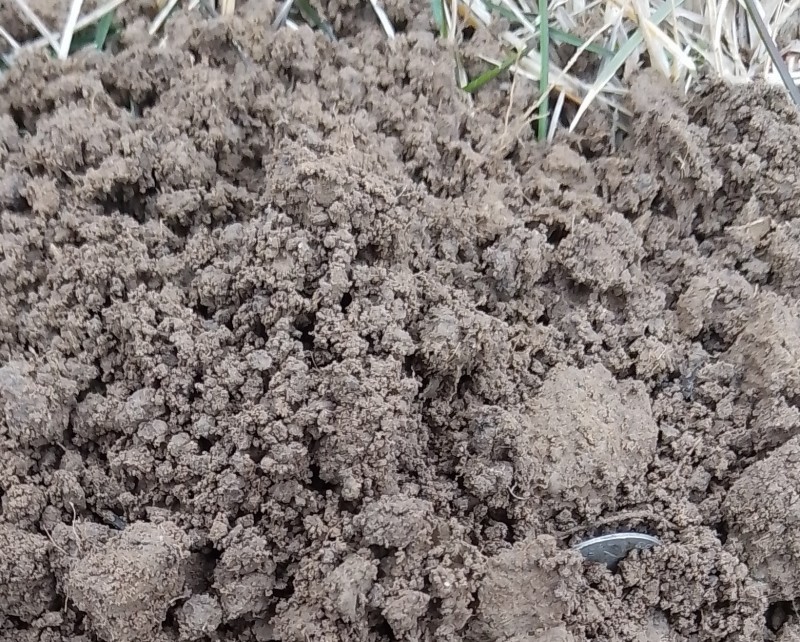
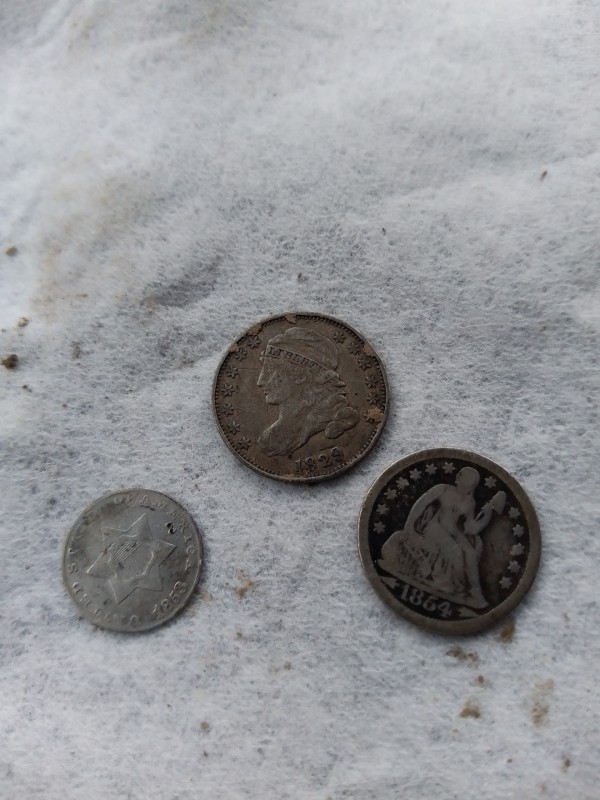
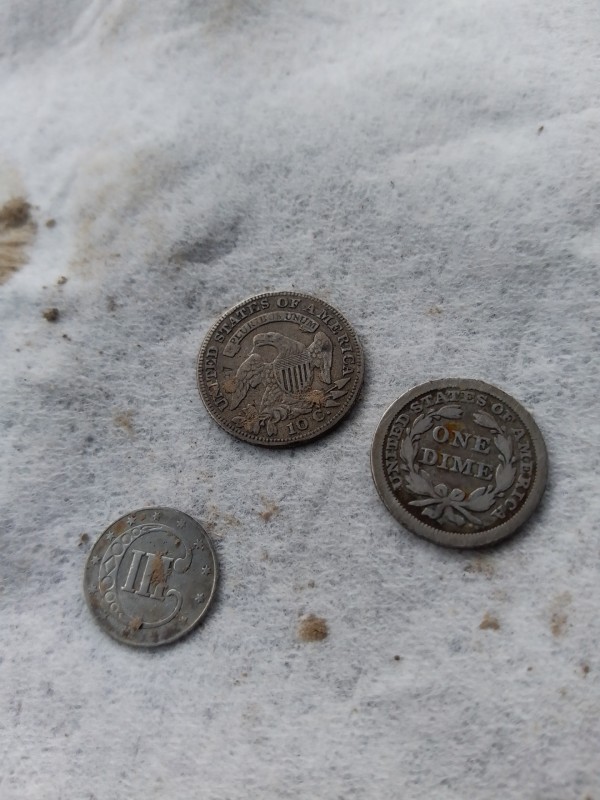
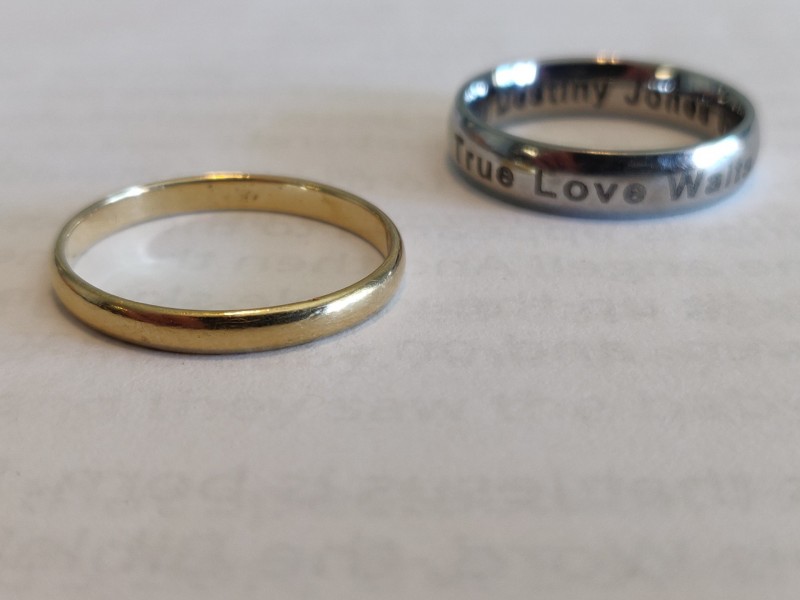
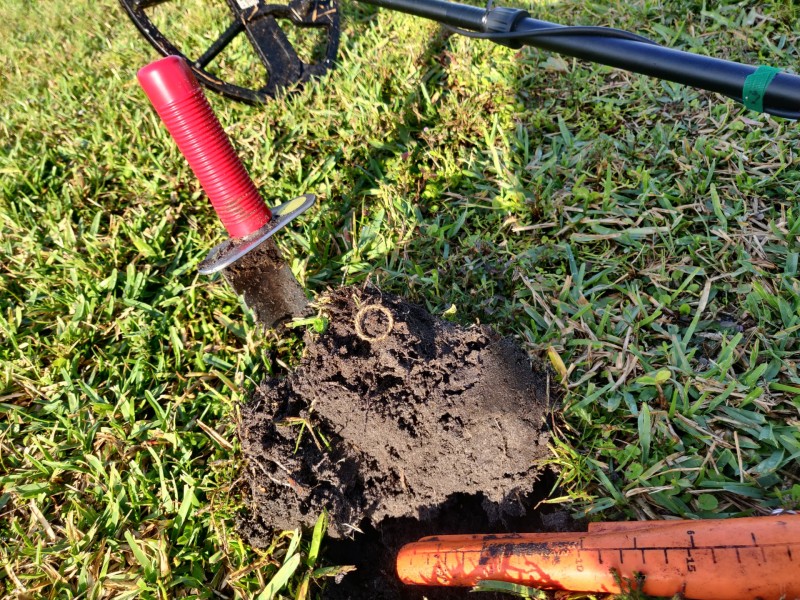
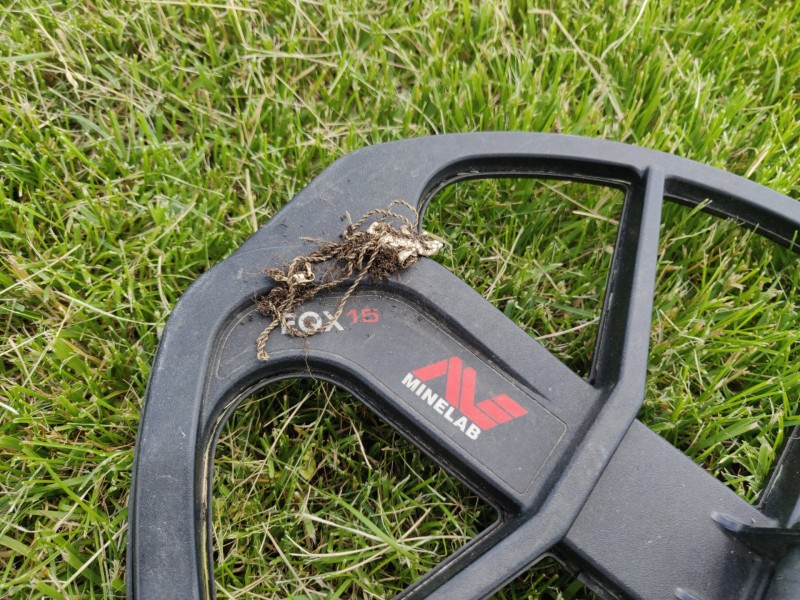
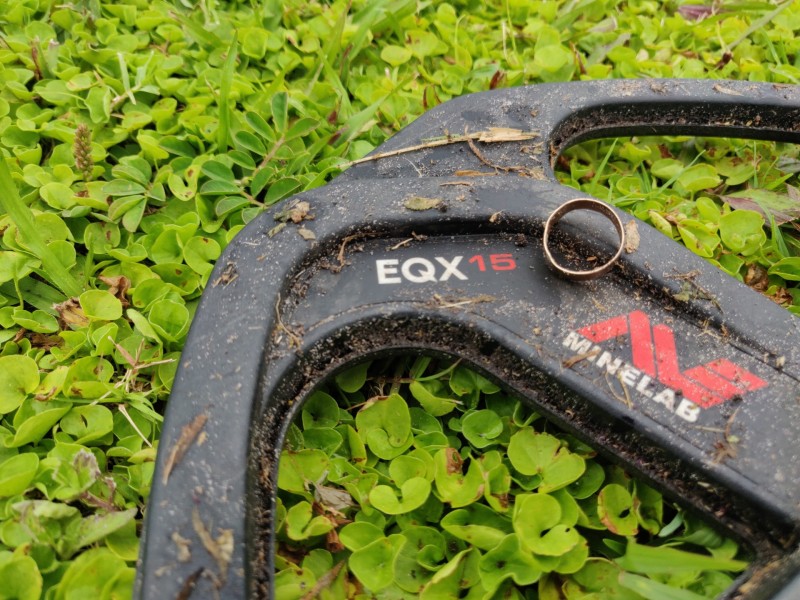
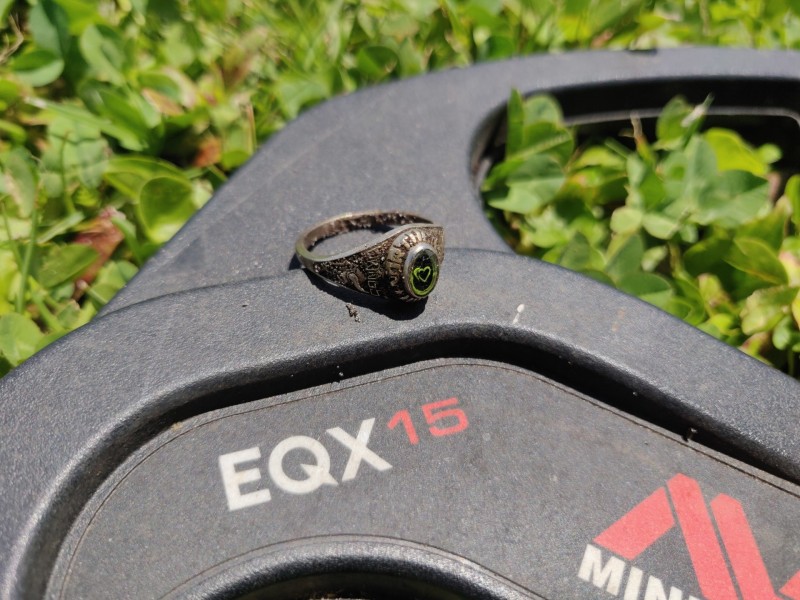
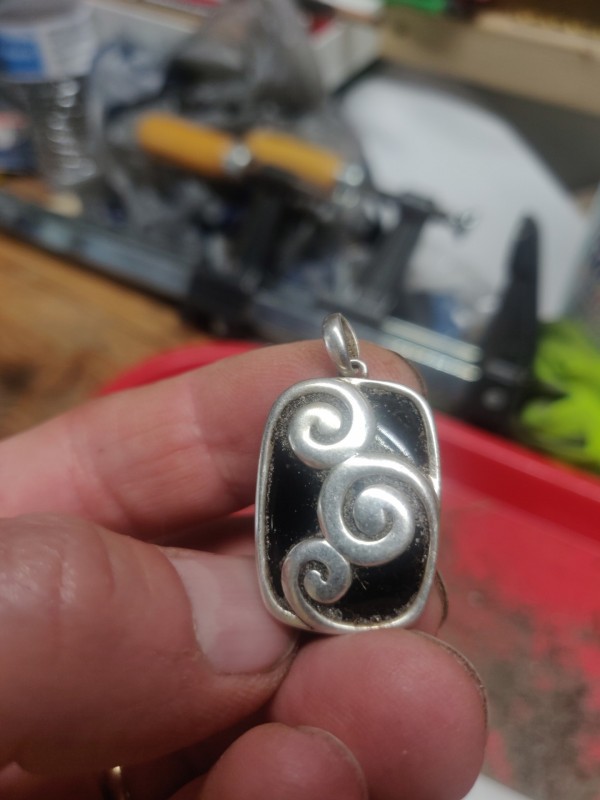
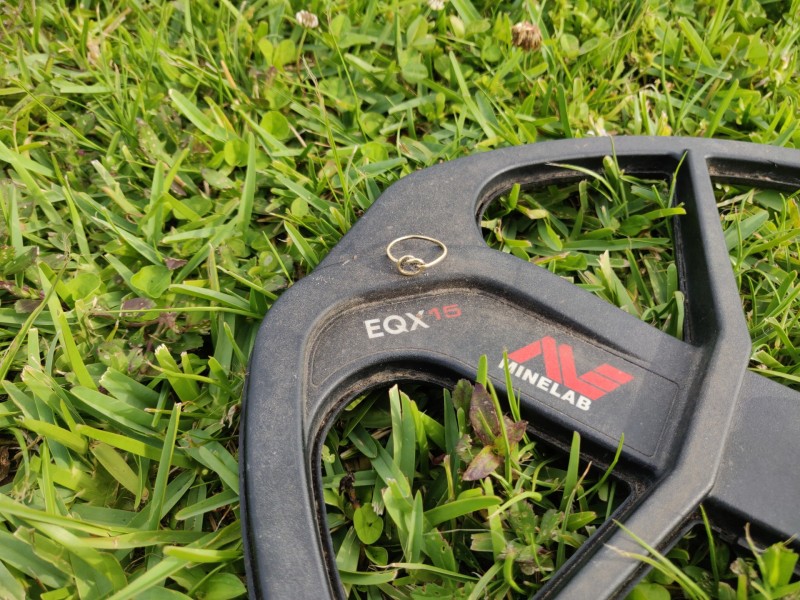
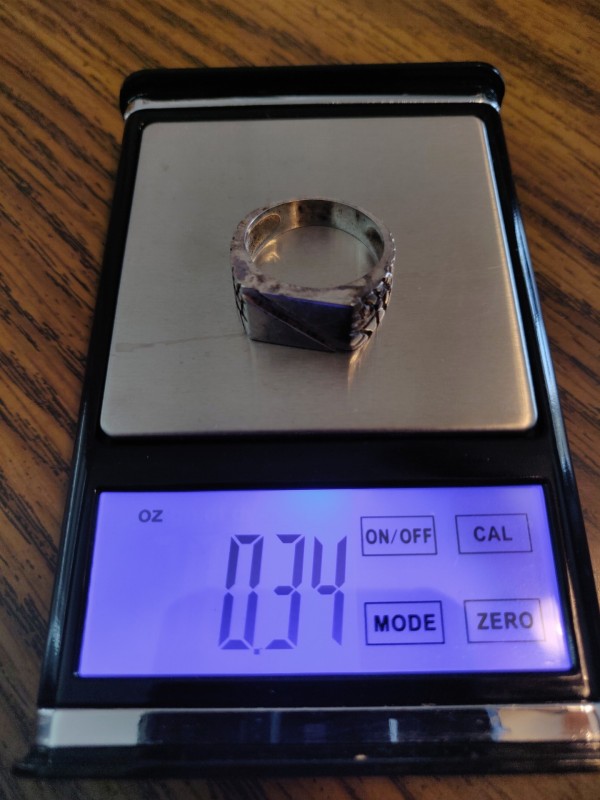
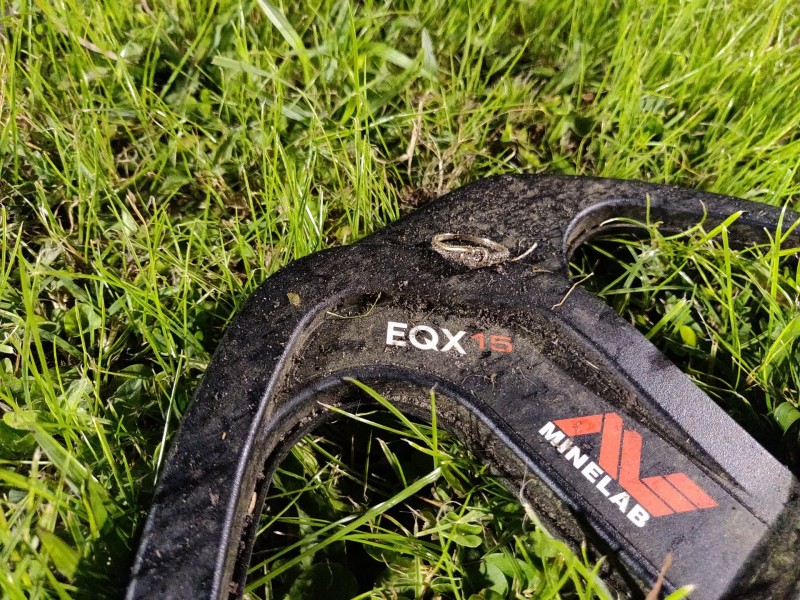
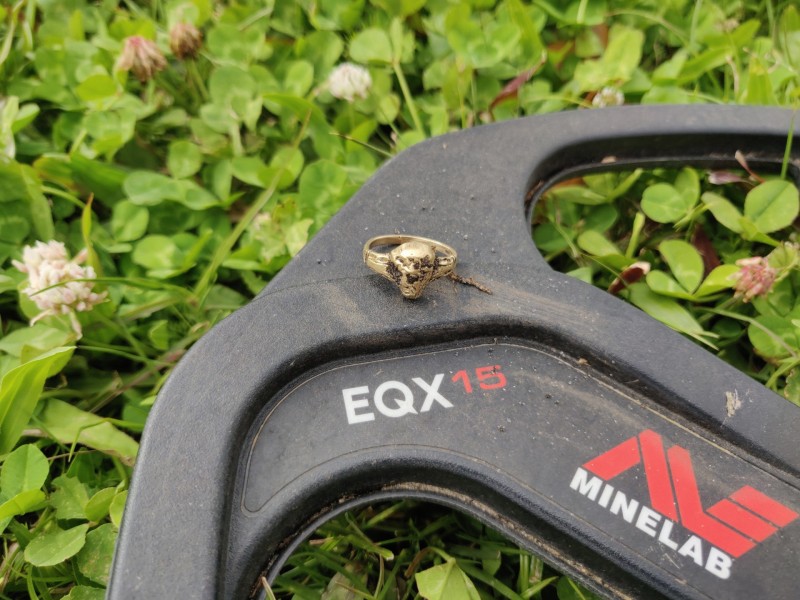
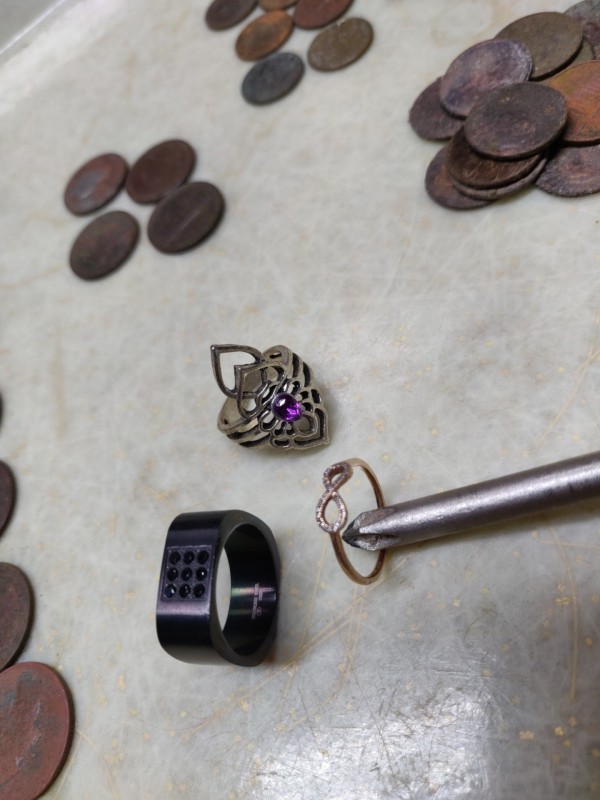
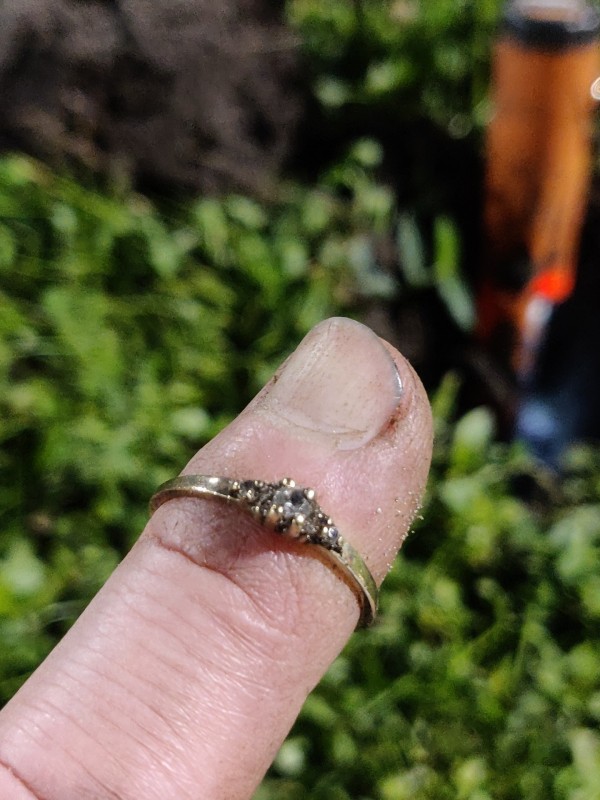
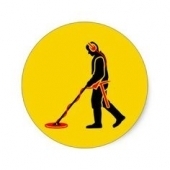
.thumb.jpg.d71314a45f3dc82bf75ac1b96e7e9201.jpg)
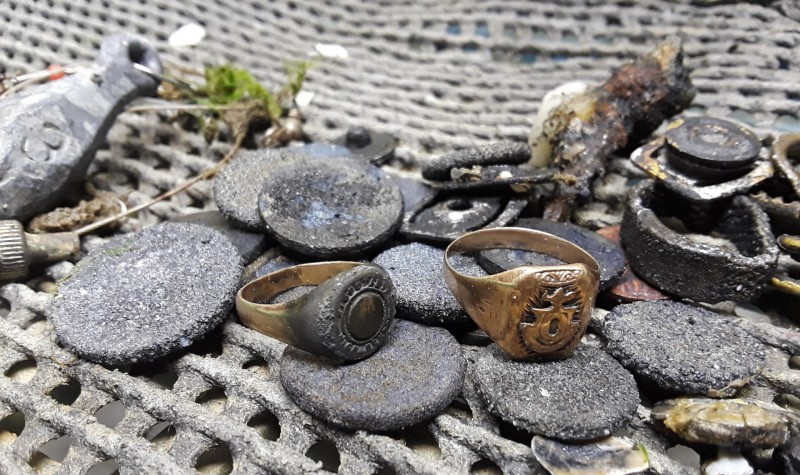
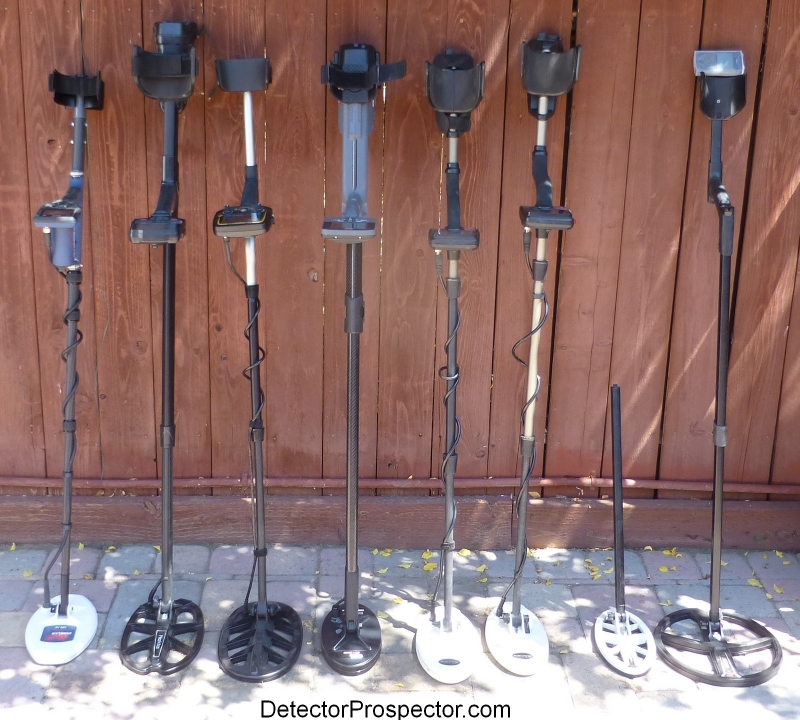



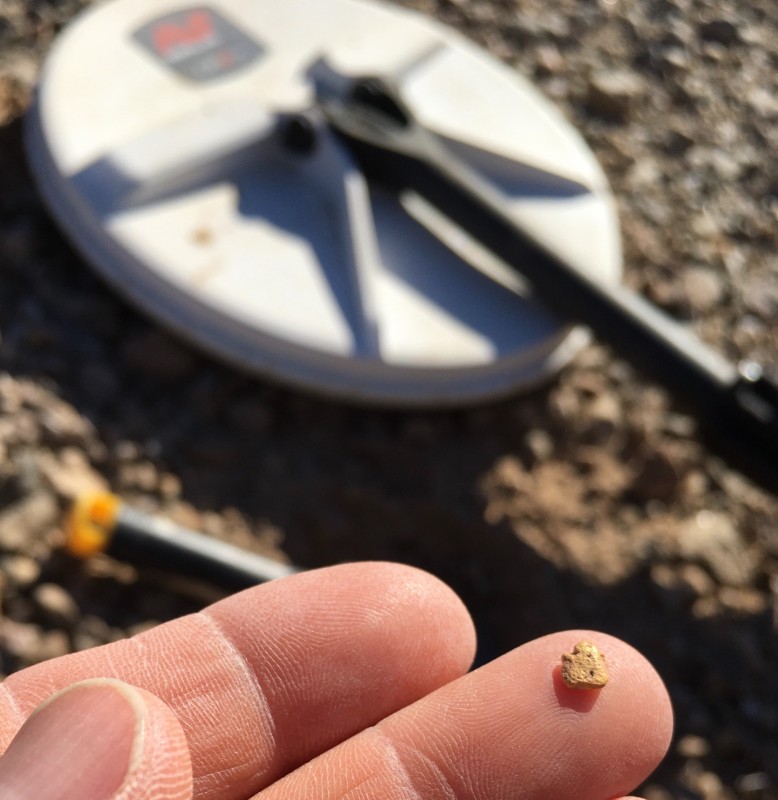
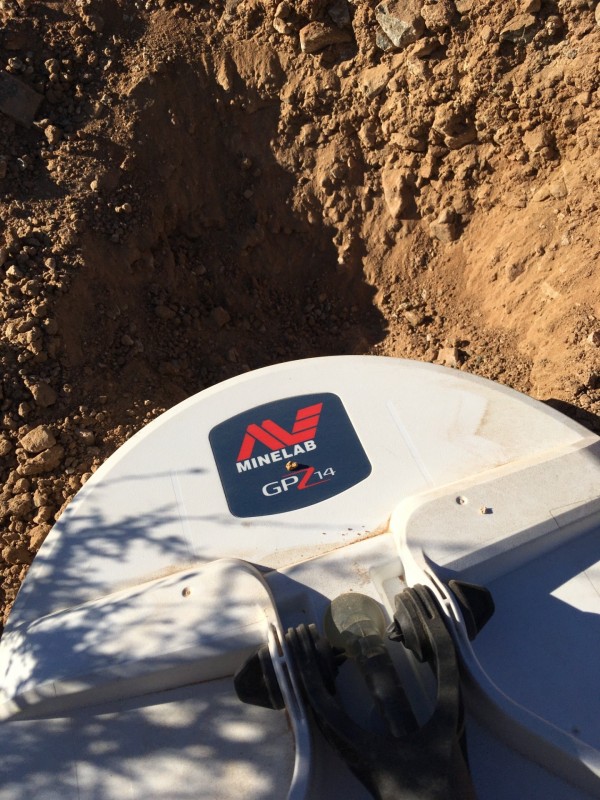
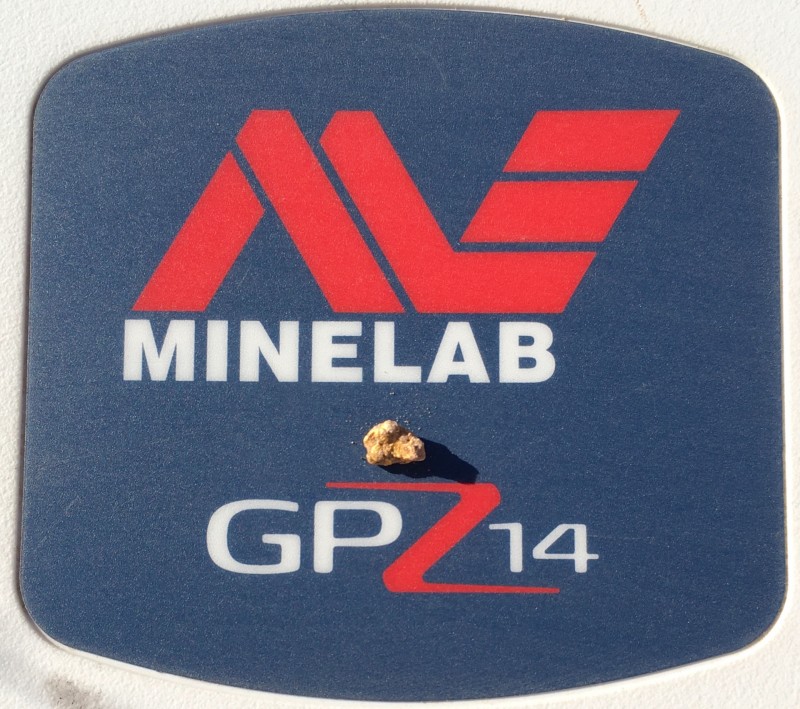



.thumb.jpg.29515b362abc800dfe4758f2fb0de7cf.jpg)
.thumb.jpg.a3d7021156ce58e7eaa31b209e2b718c.jpg)
.thumb.jpg.c55154617604de93242aa1aae73829c2.jpg)
.thumb.jpg.008984156b596a0063f90b0d7fbc295b.jpg)
.thumb.jpg.77e4cb5bf39d44bdd2050d2edb7dfdb1.jpg)

